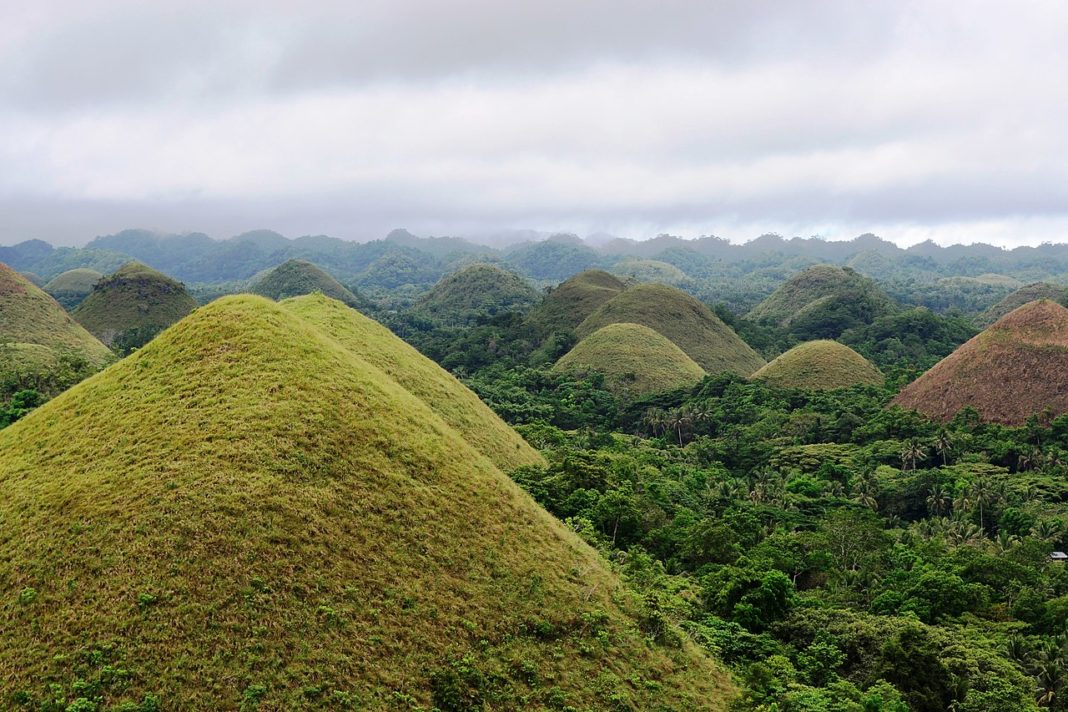In the rainy season, the grass blanketing the hills in the Philippines gives them a soft and lush appearance. While in the summer, the vegetation dies off and turns to a chocolatey brown hue, giving them their name. So if you’re asking about the Chocolate Hills description, this is the explanation.
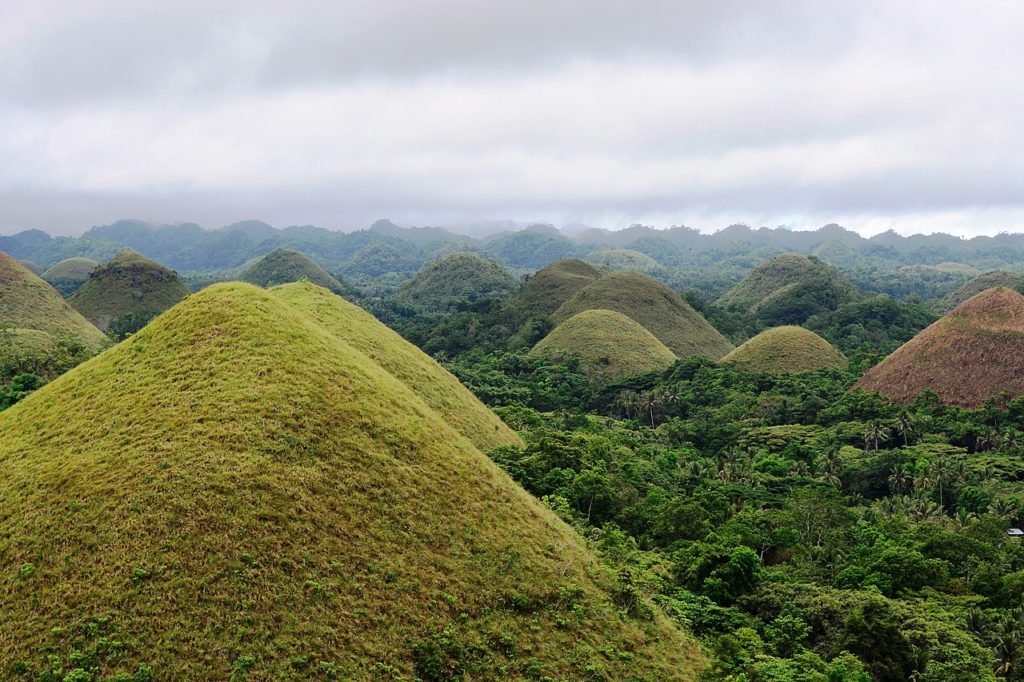
The Chocolate Hills are a geological formation in the Bohol province of the Philippines. There are at least 1,260 hills, but there may be as many as 1,776 hills spread over an area of more than 50 square kilometers. They are covered in green grass that turns brown during the dry season, hence the name.
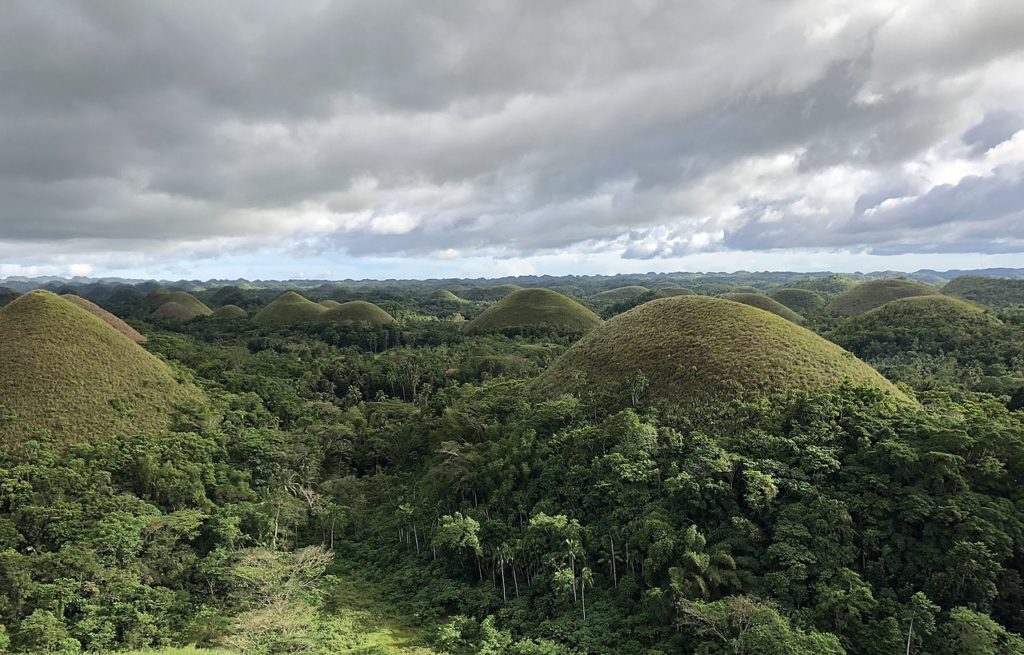
The Chocolate Hills form a rolling terrain of haycock-shaped hills—mounds of a generally conical and almost symmetrical shape. Estimated to be from 1,268 to about 1,776 individual mounds, these cone-shaped or dome-shaped hills are actually made of grass-covered limestone. The domes vary in size from 30 to 50 meters high with the largest being 120 meters in height.
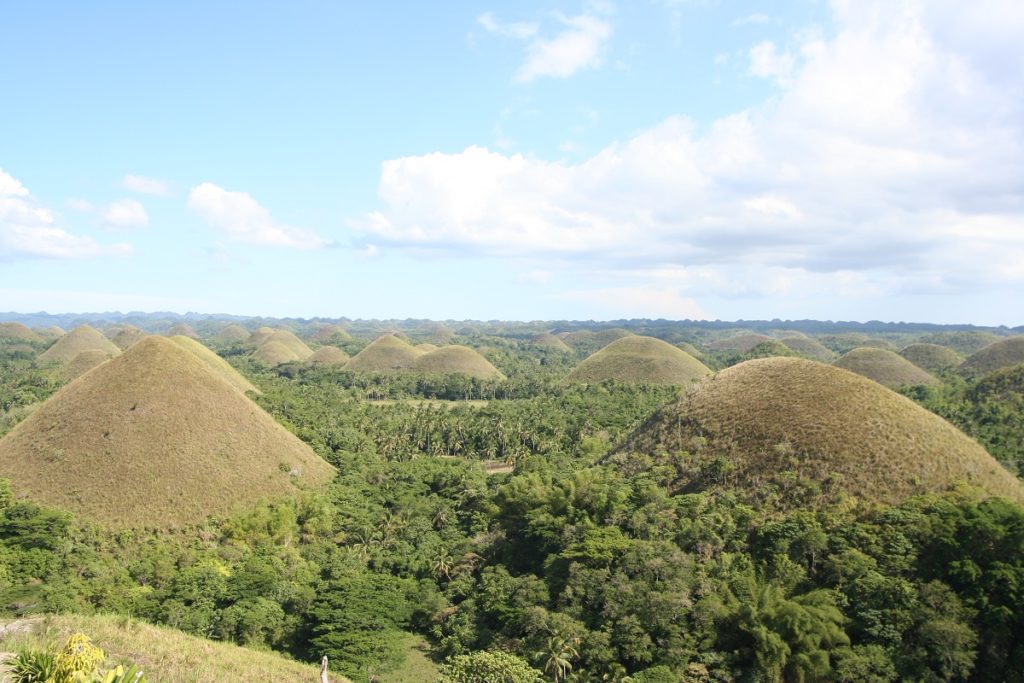
The Chocolate Hills are conical karst hills. These hills consist of Late Pliocene to Early Pleistocene, thin to medium bedded, sandy to rubbly marine limestone. These limestones contain abundant fossils of shallow marine foraminifera, coral, mollusks, and algae. These conical hills are geomorphological features called cockpit karst, which were created by a combination of the dissolution of limestone by rainfall, surface water, and groundwater, and their subaerial erosion by streams after they had been uplifted above sea level and fractured by tectonic processes. These hills are separated by well-developed flat plains and contain numerous caves and springs. The Chocolate Hills are considered to be a remarkable example of conical karst topography.
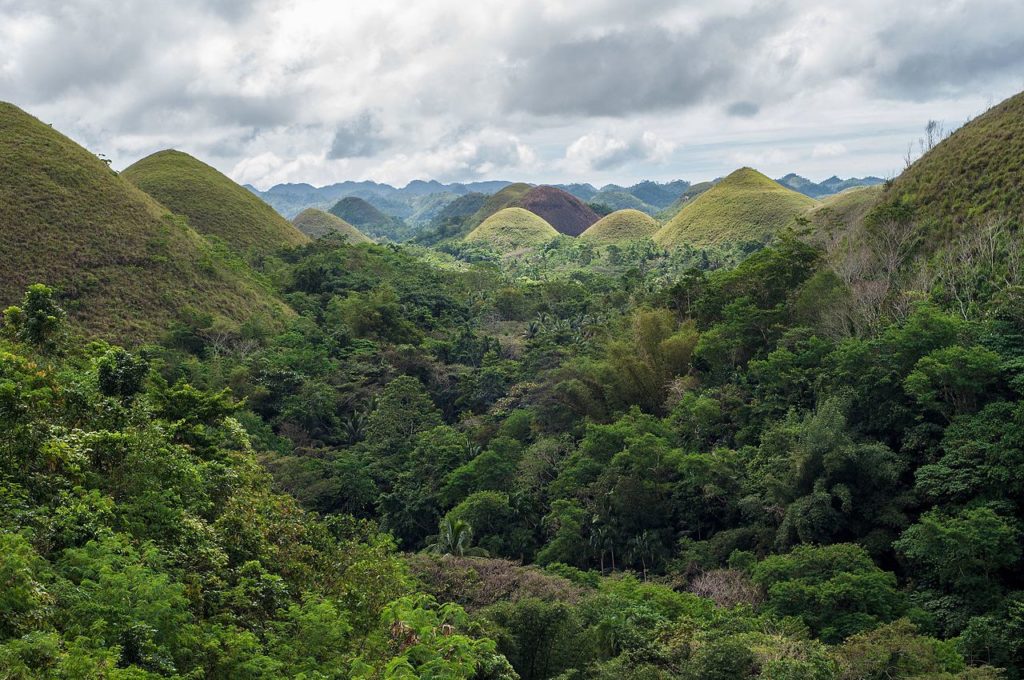
The Chocolate Hills inspired many legends. One tells the story of two giants fighting by throwing stones and sand at each other. After the fight, the hills remained. Another legend speaks about a young, strong giant who fell in love with a human girl. When she died, he cried, and his tears then petrified and formed the Chocolate Hills.
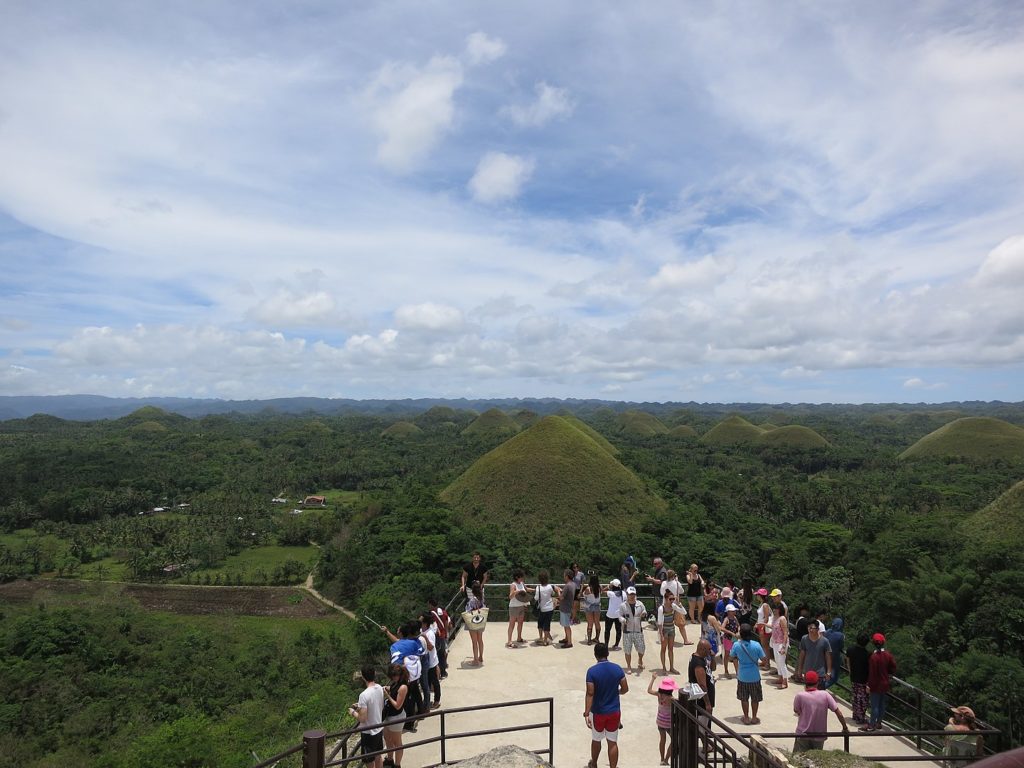
You will want to see the hills when they’re chocolate brown in color – which is the dry season in the Philippines. This season begins in late November and lasts until May. However, it’s still best to check for weather updates when traveling in the Philippines because the weather often gets unpredictable.
According to Wikipedia





